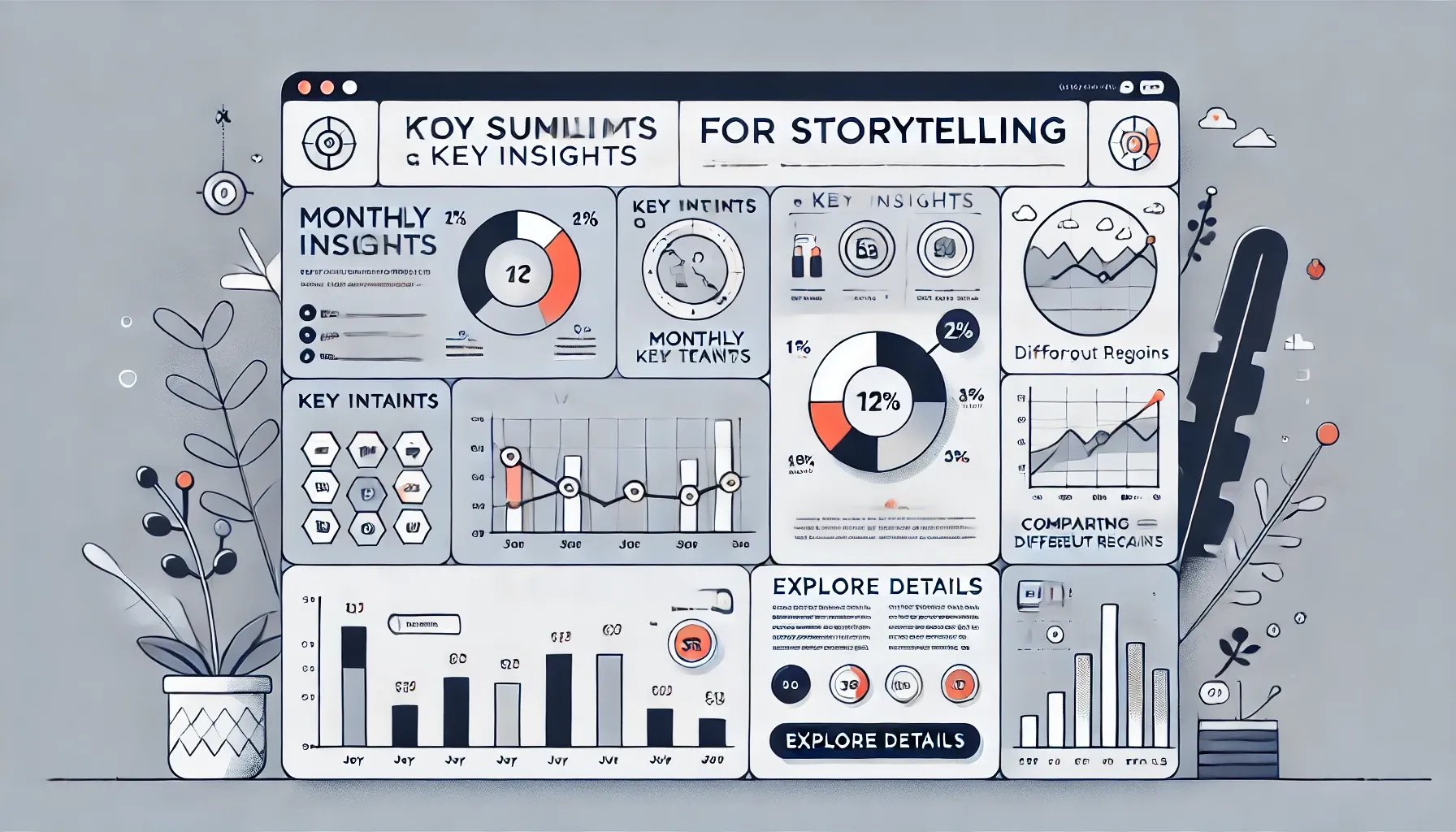Introduction
When I was still in school, I used to think dashboards and storytelling were very similar. After all, both seem to involve showing data and explaining what’s happening. But after working on dozens of product launches, business reviews, and executive presentations, I’ve realized they’re not the same at all.
Dashboards and storytelling serve very different purposes. If you try to force one into the role of the other, you’ll end up with cluttered dashboards or flat stories.
In this post, I want to share what I’ve learned from my experience, where balancing these two has been critical.
1. Dashboards: Designed for Discovery
Dashboards are exploratory tools. They’re great for monitoring key metrics, seeing trends, and giving teams a playground to explore data in a self-service way. The construction of a good dashboard often captures metrics for some key business processes and potential areas that can be improved. But they don’t directly tell a clear and linear story because you don’t know the storyline beforehand. They leave interpretation up to the user.
Example from My Work: Sales Dashboard
During a product launch, I built a dashboard showing sales by product, region, and time. It was highly interactive, with filters for segment, product line, and date range. Stakeholder could explore anything they wanted.
But the problem? It required a lot of time to figure out what was happening. Was revenue growing due to more new customers, or were existing customers buying more? The dashboard didn’t answer that directly — it just showed the numbers.
Takeaway: Dashboards are great for discovery, but you can’t assume users will interpret the data the way you expect.
2. Storytelling: Focused and Persuasive
When we needed to present results from that same product launch, showing the dashboard wasn’t enough. I had to craft a story to tell what, why and how.
What We Did: Product Performance Narrative
We realized Segment C was outperforming others, with higher repeat purchases driving revenue growth. So, instead of showing every region’s numbers, I created a highlighted chart:
- The successful segment was highlighted in blue, while others were greyed out.
- We explained the drivers behind its success and proposed next steps: expanding marketing to similar regions.
Takeaway: Storytelling guides the audience by highlighting key patterns, removing irrelevant details, and proposing action steps.
3. Dashboards Are Flexible; Stories Are Linear
Dashboards are like an interactive map, letting users explore on their own. But stories are linear—you control the journey.
Example: Regional Sales Performance
When tracking sales performance across regions, we used a stacked bar chart dashboard that showed each region’s planned vs actual sales. It was a great performance tracker, but during a quarterly review, it wasn’t helping to drive action.
So, we created a storytelling version:
- We highlighted the underperforming region in red while keeping others grey.
- We framed the conversation: “West Region is falling behind by 40%. Here’s our strategy to fix it.”
Takeaway: Use dashboards when your audience needs flexibility and stories when you need to drive home a specific point.
4. Combining Dashboards and Storytelling
To make data-driven decisions, you actually need both.
Dashboard allows you to monitor ongoing performance without having to go to an analyst to pull the data every few days. And it is also easy to share across stakholder teams such as product and engineering team. This is where dashboard shines.
Storytelling on the other hand highlights urgent priorities. It always comes when you are having a presentation, or writing a narrative on business reviews to draw leadership’s attention on certain actions. The key is not to present all the data point, but to highlight a business problem and drive actions with solid data which are found from exploring the dashboard.
Takeaway: Use dashboards to monitor trends, and storytelling to focus attention where it matters.
5. When to Use Dashboards vs. Storytelling
I now ask myself two questions before designing anything:
- Do I need to explore the data or drive action?
- Does my audience need flexibility or a clear takeaway?
When to Use Each:
- Dashboards: Continuous monitoring, self-service analytics, performance tracking.
- Storytelling: Presenting key takeaways, persuading stakeholders, driving decisions.
Takeaway: Use both tools where they excel — don’t try to make a dashboard do the job of a story or vice versa.
Conclusion: Lessons Learned
Dashboards and storytelling aren’t the same — but they’re better together. Dashboards empower exploration, while storytelling drives action. The key is knowing when to switch between them.
Next time you work with data, try this: Start with a dashboard, explore trends, and when you find something important, tell the story. Use them together, and you’ll turn data into action more effectively.
